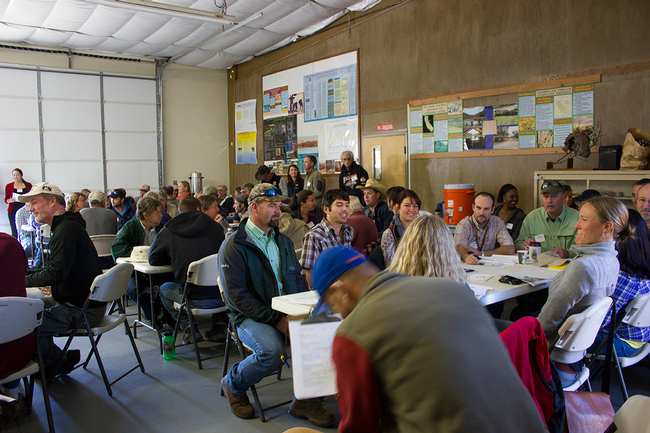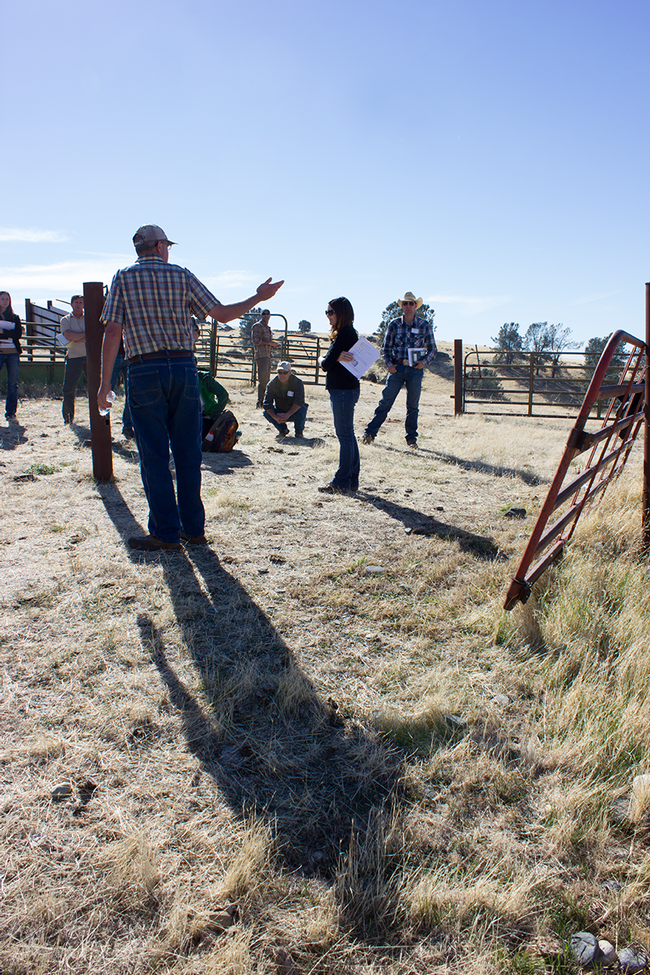- Contributor: Elise Gornish
4009- Effects of defoliation and habitat on medusahead demography
The winter annual grass Taeniatherum caput-medusae (L.) Nevski, commonly known as medusahead, is one of the most dominant invasive range species in the West. Despite a broad understanding of medusahead impacts we have limited understanding of how environmental conditions and management strategies influence medusahead population dynamics. This insight is key if we are to ultimately forecast changes in medusahead abundance and spread under various conditions. Using periodic matrix models, we are investigating how density and habitat type (grassland vs. oak woodland) and defoliation influence population dynamics. First year results show strong density dependence ranging from positive to negative depending on time of year with oak woodland habitat suppressing medusahead population growth much more than open grassland.
Check out the video for more!
- Author: Ben Granholm
At the end of May trained SFREC staff along with members of Cal Fire conducted a prescribed burn to manage vegetation on the center. There are many advantages to conducting a burn rather than other management practices. These advantages include the ability to kill off weed-seed violations and remove any unwanted species that threaten the native species in an ecosystem. However, with the current air-quality regulations and state of drought, a prescribed burn can be difficult to get approved this time of year. SFREC had a burn scheduled last week that was postponed to a later date because of these difficulties.
The burned area will be used to look at the utility of spring burns to manage vegetation and eliminate invasive species such as medusa head and star thistle as well as look at the success rate of the native species after the invasion and burn.
We thank the members of Cal Fire for working with our staff to conduct a safe and successful burn.
- Author: Jeremy James


Excitement is rising amongst rangeland weed managers, researchers, and conservationists as the date approaches for a forum on The Ecology and Management of Medusahead and Barb Goatgrass. Next Tuesday, November 5th, professionals across California and beyond will unite at the Sierra Foothill Research and Extension Center under a common interest with these rangeland invasive species.
The agenda with information on the specific topics and knowledgeable speakers is available. Staff and researchers associated with UCANR and UCCE will be speaking alongside other various professionals to discuss important topics. Seed dispersal, community dynamics, grazing, prevention, and NRCS programs available are a few of the targeted concepts that will be covered regarding medusahead and barb goatgrass invasions. Field visits and a free lunch are additional compelling components of the day.
Around 100 people are expected to attend. Jeremy James, Director of the Sierra Foothill Research & Extension Center, and Elise Gornish, UC Davis Plant Sciences Postdoc, among others, have been focusing their efforts on planning and organizing this regional educational effort.
Nov 5th SFREC Medusahead Goatgrass Agenda
- Author: Jeremy James
- Contributor: Maddison Easley
On November 5th, 2013, SFREC will bring together UC researchers, land managers, producers and conservation professionals from across the state to explore some of the latest research findings and management strategies on two of the most serious rangeland weeds, medusahead and barb goatgrass. Estimates indicted these invasive species may decrease forage quality and production by up to 70 percent. Additionally, these plants increase the incidence of eye problems, such as pink eye in beef cattle. Intermountain species like medusahead create significant fuel accumulation - increasing the frequency of dangerous wildfires that destroy both livestock feed and critical wildlife habitat.

Medusahead Forum





